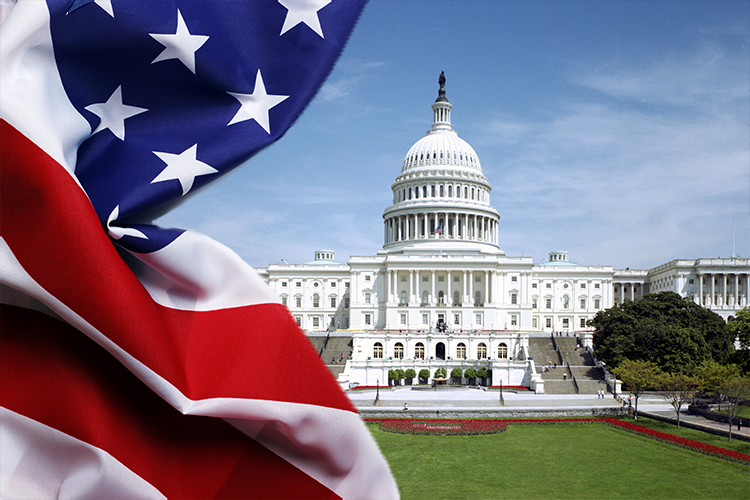In the United States, the lack of cooperation between elected officials is exhausting for millions of voters. Instead of putting the needs of their constituents first, many politicians prioritize their political party. As a result, legislation stalls and countless Americans suffer.
With that said, things do not have to be this way. As an alternative approach, lawmakers from both sides of the aisle have come together to form No Labels. In a nutshell, this coalition works to bridge the gap between the polarized sides of today’s parties by instilling the value of bipartisanship in everything it does. To begin decreasing political division, this group’s founders firmly believe that politicians need to start cooperating more. Although examples of this kind of behavior might be increasingly rare in today’s climate, there are many places to spot them throughout history.
If you are looking for some inspiration, check out these 11 examples of bipartisanship in U.S. politics.
1. Great Compromise of 1787
From the earliest days of the U.S., compromise between parties has been necessary. In 1787, for example, when the country’s founders disagreed on how lawmakers should determine congressional representation, Robert Sherman of Connecticut proposed the current setup of a proportional House and an equally distributed Senate. This way, the law represented both major views.
2. Lincoln’s Team of Rivals in 1860
When Abraham Lincoln unexpectedly won the presidential nomination and eventual election of 1860, he further surprised Americans when he chose political rivals to be in his cabinet. From his perspective, the men’s intelligence was of higher importance to the American People than their tendency to agree with him.
3. Truman’s Supreme Court Appointee in 1945
In 1945, President Harry Truman came into office three months after the death of President Franklin Roosevelt. Even though he had the opportunity to “fill” the Supreme Court with a justice from his party, he chose to extend a peace offering to those on the opposite side of the aisle by picking a Republican to fill the seat instead.
4. Civil Rights Act of 1964
During one of the most divided times in U.S. history, lawmakers managed to come together under the cooperative leadership of a Democratic majority leader and a Republican minority leader. When it came time to vote, the Civil Rights Act passed with the bipartisan effort of 44 Democrats and 27 Republicans.
5. Great Society Program of 1965
Soon after, representatives from both parties came together again for the passage of one of the most ambitious anti-poverty and anti-discrimination efforts in history. With both sides showing great support, the Great Society Program led to significant changes around the country for millions of Americans.
6. Man on the Moon in 1969
For an excellent example of bipartisanship, look no further than the National Aeronautics and Space Administration. Without the collaboration of opposing sides, the U.S. would have never seen the birth of NASA. Of course, without NASA, there would also be no moon landing. Indeed, when the country was competing with Russia’s space program in the 1960s, bipartisanship played a major role in the nation’s success.
7. Endangered Species Act of 1973
When President Richard Nixon called on Congress to improve species conservation efforts in 1973, both parties largely supported efforts to protect plants, invertebrates, and the ecosystem. As a result, lawmakers easily passed the Endangered Species Act.
8. Social Security Reform of 1983
Despite being one of the thorniest issues in American politics, the Social Security Act received several revisions in 1983 thanks to a collaborative effort of opposing sides. By making the focus of program funding a problem everyone was facing, leaders were able to revise the law and move forward with necessary changes.
9. Americans with Disabilities Act of 1990
When lawmakers were considering how to prevent discrimination against citizens with disabilities, it was a controversial topic. At the time, many Americans were still opposed to the idea. Nonetheless, members from both parties managed to work together to pass groundbreaking legislation that led to legal protections for millions.
10. Welfare Reform of 1996
1996 was another year when U.S. government was extremely divided. To move forward with tackling poverty, President Bill Clinton passed welfare reform legislation with work requirements that satisfied conservatives and increased education and child care spending which satisfied liberals. Although it left many people less-than-happy, it was a compromise that moved the nation forward at a time when it needed to respond to the needs of many.
11. Every Student Succeeds Act of 2015
Although recent years have led to more and more political divide, there have still been instances of bipartisanship. One example was in 2015 when leaders from both sides of the aisle showed overwhelming support for replacing the No Child Left Behind Act with the ESSA.
At the end of the day, the U.S. cannot truly succeed until everyone can come together. While inspiration can be hard to find in today’s politics, there have been many examples throughout history to look at.













